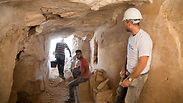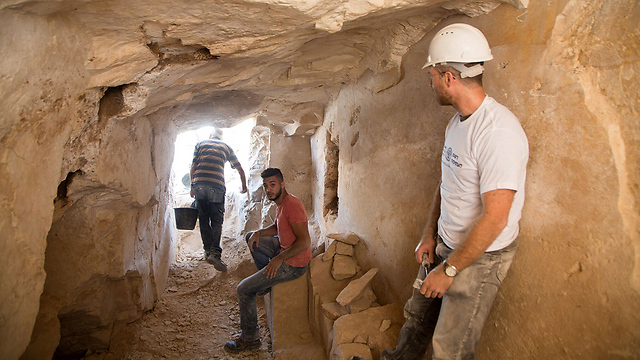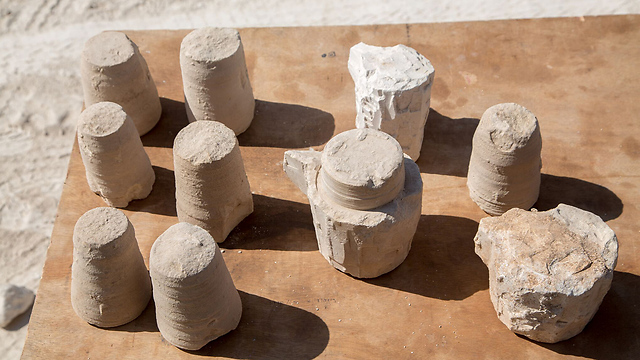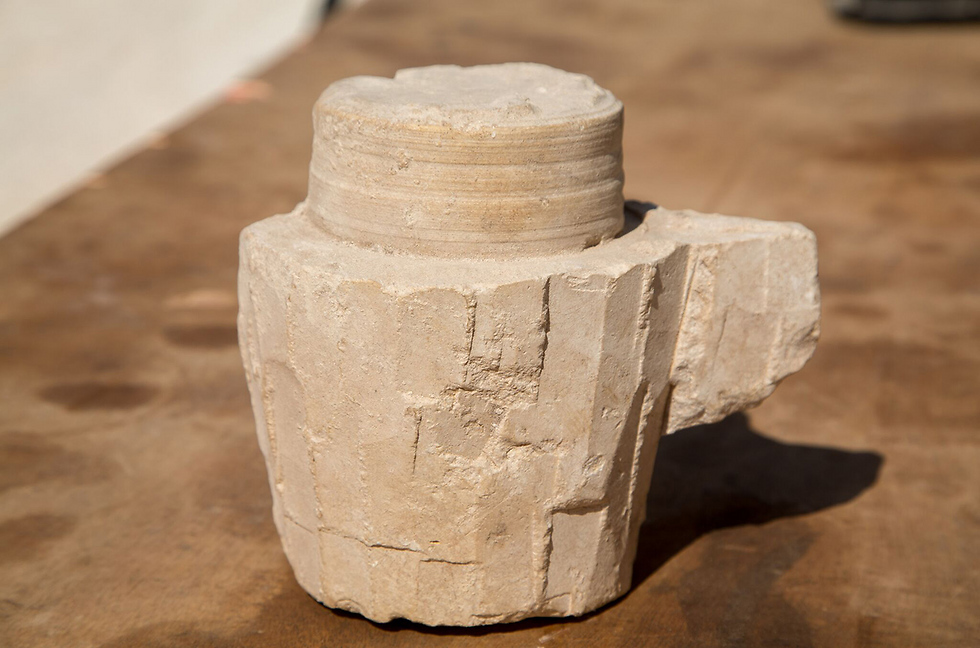
Archaeologists at Reineh, in the Lower Galilee, said Thursday that the discovery of a Roman-era stone quarry used to make household items would shed important light on social norms in Israel during the Second Temple period.
"In ancient times, most tableware, cooking pots and storage jars were made of pottery," said Dr. Yonatan Adler, a senior lecturer at Ariel University and director of the excavations on behalf of the Israel Antiquities Authority (IAA). "In the first century of the Common Era, however, Jews throughout Judea and Galilee also used tableware and storage vessels made of soft, local chalkstone, probably for religious reasons."
Adler explained that according to ancient Jewish ritual law, vessels made of pottery are easily made impure and must be broken. Stone, on the other hand, was thought to be a material which can never become ritually impure.
“As a result ancient Jews began to produce some of their everyday tableware from stone. Although chalkstone vessels are well-known at many Jewish sites throughout the country, it is extremely unusual to uncover a site where such vessels where actually produced."
"Until today, however, only two other similar sites have been excavated, and both of these were in the area of Jerusalem," Adler added. "Our excavations are highlighting the pivotal role of ritual purity observance not only in Jerusalem but in far-off Galilee as well."
The IAA said in a statement that the dig site was discovered by construction workers working on a municipal sports center and was the second workshop to be unearthed in the Reineh area. The Authority said the excavations revealed an artificially hewn cave marked with ancient chisel marks on the walls, ceiling and floor and strewn with thousands of stone cores, the ancient industrial waste from stone mugs and bowls produced on a lathe.
They said that ancient workers would have quarried the raw material for the chalkstone vessels, the majority of which Adler said were probably mugs and bowls of various sizes.
Authorities said the discovery holds significant for both Christian and Jewish scholars of the era: For Jews, the finds provide evidence that the observance of purity laws was widespread and not limited to Jerusalem, at least until the Bar Kokhba revolt which ended in 135 CE.
The current excavations are expected to lead to answers about how long these laws continued to be observed among the Jews of Galilee during the course of the Roman period.
For Christian scholars, too, the finds shed light on Galilee life during the life of Jesus.
"The fact that Jews at this time used stone vessels for religious reasons is well documented in the Talmudic sources and in the New Testament as well," said Yardenna Alexandre, an archaeologist at the Israel Antiquities Authority who specializes in the study of Roman Era Galilee.
Alexandre said the finds provide a "tantalizing link" to the New Testament story of the Wedding at Cana where the water-turned-to-wine is said to have been held in six stone water jars set there for the Jewish custom of purification, containing 20 or 30 gallons each. (John 2:6).
Alexandre added that the Reineh site is located near the village of Kfar Kanna, which many scholars believe is the site of the Biblical village.
“It is possible that large stone containers of the type mentioned in the Wedding at Cana of Galilee story may have been produced locally in the Galilee,” Alexandre said.
Article reprinted with permission from TPS.






















